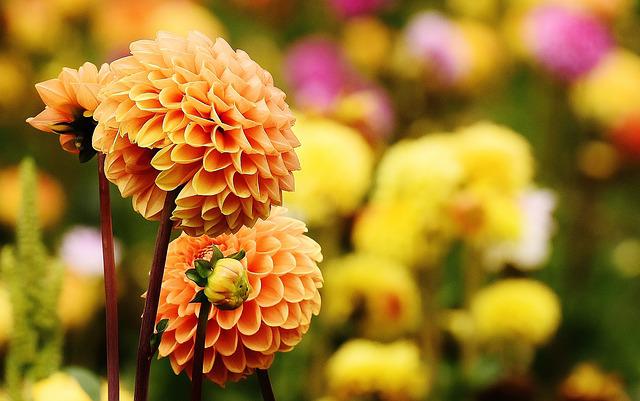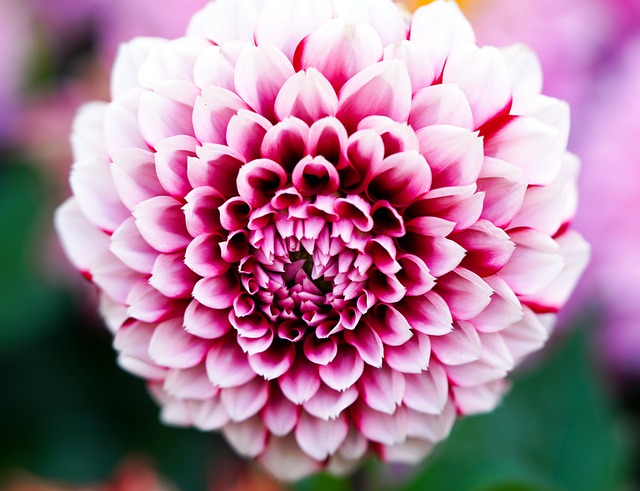Why Is My Dahlia Dying? 5 Ways to Revive a Dying Dahlia

There are a few reasons why your dahlia may be dying. The most common reason is overwatering, which can cause the plant to wilt. It cannot absorb nutrients from the soil and eventually die. In addition, frequent fertilization or pesticide use can also lead to toxicity and nutrient deficiencies in the soil, affecting plants, including Dahlias. If an insect infestation or fungal infection is present in your garden, these pests will consume the dahlia leaves and ultimately kill them.
Suppose you notice these signs on your dahlia (or any other plants in your garden). In that case, it’s important to take action immediately by correcting the problem and then monitor the results over time to ensure that wellness occurs.
Table of Contents
The 6 Most Common Reasons Plants Die
Overwatering
Overwatering is one of the most common gardening mistakes and can have serious consequences for your plants. When water enters the plant’s soil medium from above, it causes excess moisture and salts to build up in the roots zone. This can lead to root rot or other problems with plant growth.
Watering should be done primarily through rainfall or a watering system that irrigates only when necessary instead of daily saturation like when over-watering occurs.
Expert dahlia growers advise against watering them in moderate climates until the summer, when they have a lot of foliage and a much higher temperature. The greatest water demand occurs at this time. The heat in the spring where you live does, however, affect this.
Underwatering
Watering too little is another common gardening mistake. Under watering can lead to a condition called chlorosis, which results in yellowing of the leaves and eventually death of the plant. Chlorosis is caused by insufficient water available to the plant’s roots and stems.
Suppose you notice that your plants are not getting enough water. In that case, it’s important to regularly check soil moisture levels with a hand probe or moisture meter so that correct watering schedules can be established. Overwatering also causes chlorosis. Underwatered plants will also exhibit other signs, like wilting or low growth rates.
Lack of Sunlight
A third major cause of plant death is too little sunlight. Plants need light to photosynthesize and convert the energy from the sun into food for their roots and flowers. Too much shade or darkness can lead to stunted growth, sparse flowers, and even a whole branch or trunk dieback. If you notice that your plants are not getting the sunlight they need, it’s important to increase the number of hours of light per day by moving them closer to a window or using artificial light.

Poor Draining Soil
Poor soil drainage is also a common cause of plant death. If the soil is moist and does not have adequate airflow, water will stay on the surface and become stagnant. This can lead to overwatering, root rot, and fungal infections. To fix poor soil drainage, add organic matter such as compost to the desired area before planting your plants to improve aeration and promote healthy root growth.
Dahlias that have poor drainage may become soggy. However, sandy soil that drains excessively loses too much moisture. Dahlias can also perish if the pH of the soil is too high or too low. By incorporating various products into the soil, these can be quickly fixed. Additionally, as discussed below, you can alter how high or low you plant your dahlias in the ground.
Pests and Diseases
Poor soil drainage can also cause problems like fungus overgrowth, root rot, and poor availability of nutrients to the plant. When these conditions occur, the plant’s leaves will turn yellow or brown and may die back. Symptoms that your dahlia is being attacked by pests & diseases:
- Stunted growth means the plant won’t reach its usual height for its variety.
- Holes in the leaves can range in size from tiny spots to large holes.
- tiny bite marks, black spores on the underside
- yellowing of leaves or small yellow spots
- missing stem segments on recent (green) growth
- visible insects on the plant’s surface, in the soil, and nearby
- wilting and dying leaves
- Rapid darkening or browning of the foliage
Frequent Fertilization
A fourth common cause of plant death is too much fertilizer. Overfertilization can burn the leaves and roots, leading to decreased growth, stunted flowers, and even a whole branch or trunk dieback.

5 Ways to Revive a Dying Dahlia
Have a Water Schedule
To establish the proper watering schedules, if you notice that your plants aren’t getting enough water, it’s critical to regularly check the soil moisture levels with a hand probe or moisture meter. Chlorosis is also a result of overwatering. Other symptoms of underwatering in plants include wilting or slow growth.
Give Your Dahlia Adequate Sunlight
If your garden gets less than six hours of direct sunlight per day, supplement with growth lights if necessary. Also, check to see if any shading objects in your garden could be moved so that more light reaches the plants. And avoid planting trees near your house.
Provide a Good Drainage Soil for Your Dahlia
If the soil is poorly draining, they create a mound. Replant them deeper in the soil if it is too free-draining. Using a soil testing kit, determine the soil’s pH. For most varieties, the ideal pH range is 5.8 to 6.2. When adding sulfur or aluminum sulfate to soil with an excessively high pH, adding limestone or hydrated lime can raise low-lying soil.
Check Any Pests and Diseases
When the sun is out, spray the plant with the spray mixture. Use a natural spray to kill mold. When you notice the problem, move potted dahlias inside or outside. When fighting against pests, plant a variety of different plant species. It can sustain normal damage to the stem and some eaten leaves. Utilize snail and slug pellets. When there are too many insects, use sticky traps to capture them.
Check the Soil First Before Giving Nutrients
When fertilizing your plants, be sure to use a balanced formula that contains nitrogen (N), phosphorus (P), potassium (K), sulfur (S), magnesium (Mg), and calcium (< 200 ppm for potting soils). Also, note that most plants like their soil to be slightly dry before receiving a nutrient application; water only if necessary after the application.
A high-nitrogen fertilizer may be needed if your dahlia is not getting enough nitrogen, phosphorus, or potassium in its soil. Use a slow-release formula to accommodate for the plant’s slower absorption rate. If the pH of your soil is too alkaline (salty), use a magnesium supplement instead of an elemental fertilizer. Both can be found at most garden centers. Mix the nutrients into the soil before applying them and water them well afterward. Don’t overfertilize. This can burn leaves.
